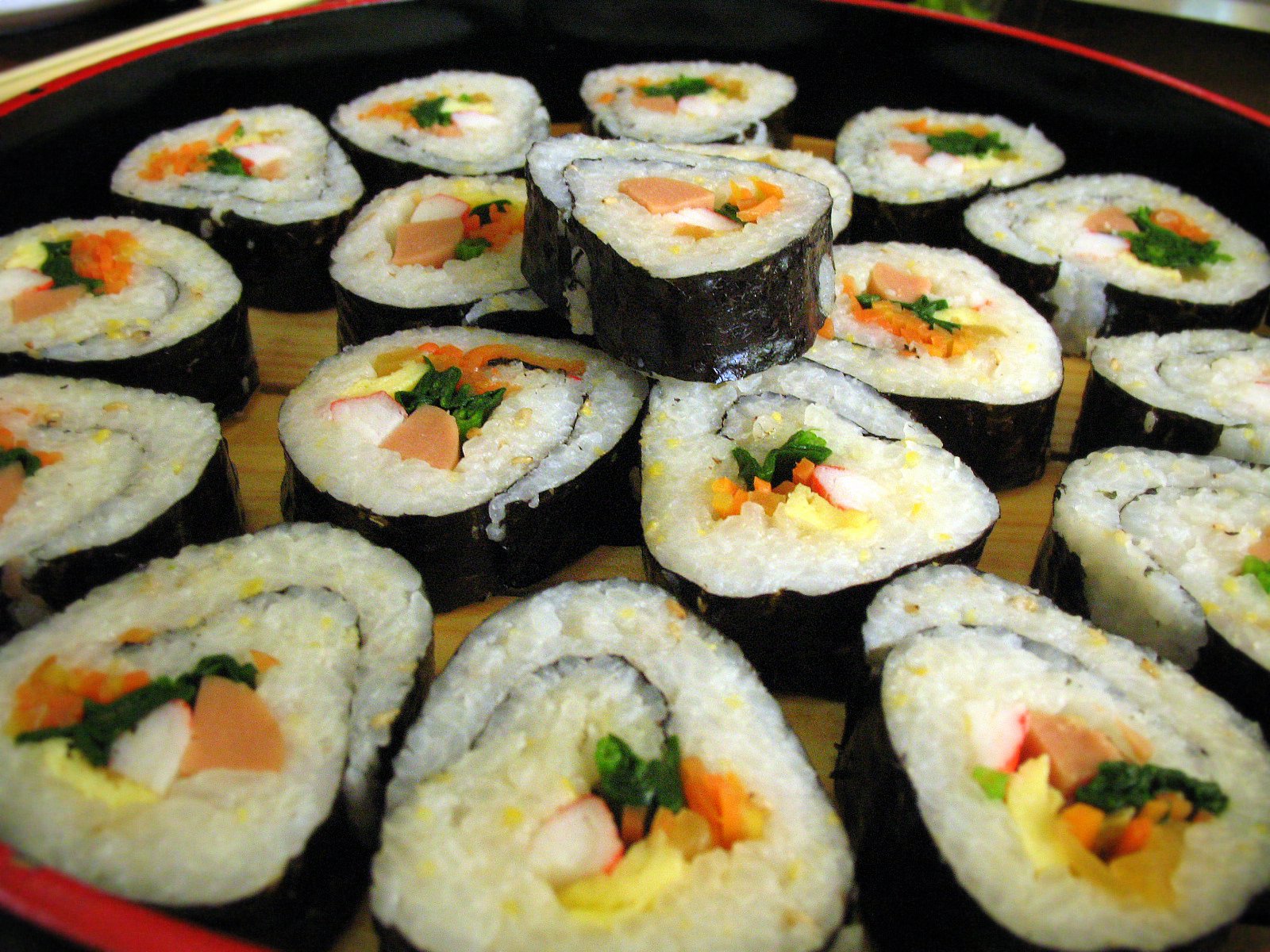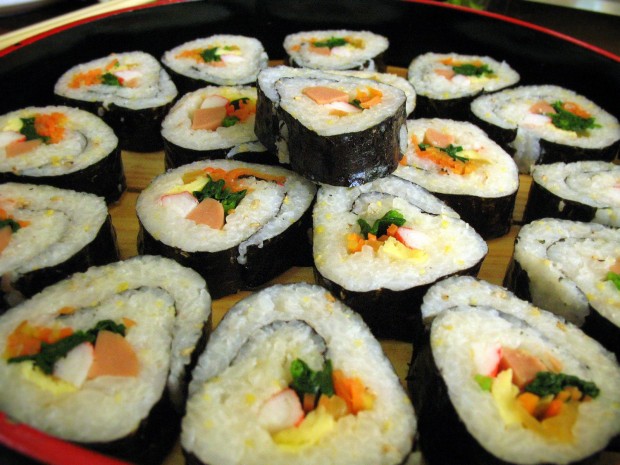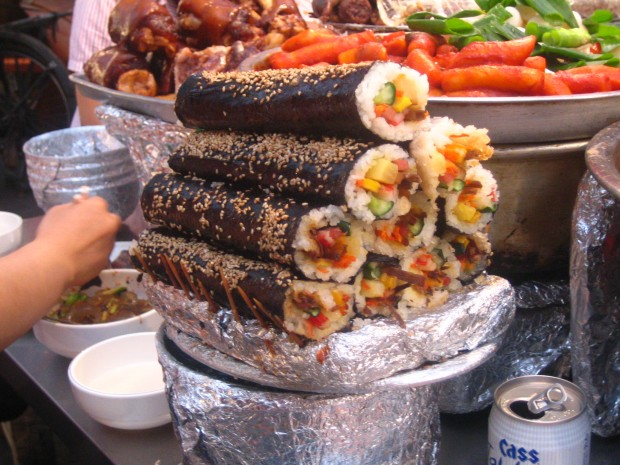
Kimbap: Korea’s special food
Kimbap is “bap” which is rice wrapped in “kim” which is dried seaweed leaves. It’s considered Korea’s relief food; it’s made especially for kids to put in their lunch boxes when they go to school, or as a light lunch served with Korean specialty, Kimchi. But since it needs a lot of preparation it has become a special food, made mainly for picnics or outdoor gatherings.
It’s said that Kimbap in its present form appeared in 1950 and have gotten more popular through the years. But the idea of eating rice wrapped in dried seaweed was present in Korea for a long time.
Some people claim the Kimbap has more Japanese roots, dating back to the wartime between Korea and Japan. It’s arguably that Kimbap is similar to Japanese futomaki, with some changes like how Japanese used rice vinegar while Korean used sesame oil instead.
There has been many fusions and new filling entering the Kimbap world recently but the most basic one includes rice along with carrots, cucumber, yellow pickled radish, and spinach, roasted walnut and different choices of vegetables, meat, fish, or egg, with sesame seeds sprinkled on the roll. The Kimbap is traditionally served with yellow pickled radish which is known as “danmuji”, soy sauce, and soup; the soup could differ from one place to another, along with the stuffing and the side dishes.
One of the most usual Kimbap rolls is the beef one, which is better known as “blugogi” which includes all said ingredients in addition to beef marinated in Korean sauce. Another famous type of Kimbap rolls is the tuna roll, some types have tuna with the usual stuffing of radish and cucumbers and other rolls have tuna mixed with mayonnaise.
On the other side, Kimbap has some fusion rolls that include ingredients that have only come around in the modern age. The first of these fusion rolls is the cream cheese roll, instead of meat or tuna, cream cheese is put in the roll along with radish and carrots and rice wrapped in seaweed, and this combination might seem absurd, but it’s one of the best types of Kimbap rolls.
Another new type of rolls is the fried shrimp roll, while other traditional rolls include pork or crab meat, or fried eggs. The most traditional type of Kimbap is plain rice wrapped inside some dried seaweed leaves and served with radish kimchi.
Lately, kimchi found its way even to convenience stores with “Samgak Kimbap”, which is a triangular Kimbap and could be filled with anything, from kimchi fried rice with pork meat to tuna and vegetables filling in sweet rice.
Kimbap is everywhere in Korea, in the subways, on the streets, in convenience stores, there even have been a couple of stores dedicated completely to serving all kinds of Kimbap. It’s becoming one of Korea’s distinctive dishes.




